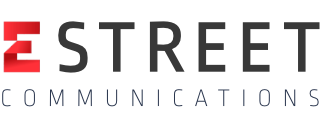Running a nonprofit organization is both rewarding and challenging—especially in a vibrant, community-focused city like Denver. With limited budgets, smaller teams, and urgent missions, Denver nonprofits often need to get the most out of every resource they have. Fortunately, technology can level the playing field by helping nonprofits do more with less. From affordable cloud-based solutions to robust cybersecurity measures that protect donor data, these technology tips can significantly impact how well your nonprofit serves its community.
In this blog post, we’ll explore a range of technology strategies that focus on optimization, efficiency, and scalability—so your Denver nonprofit can make the best use of its time, money, and talent. Whether you’re seeking ways to collaborate better with volunteers or secure your donor data, these recommendations will help you take your mission to the next level.
Embrace Cloud-Based Solutions for Cost Efficiency
When you’re working on a tight budget, investing in large-scale servers or expensive software licenses may be out of reach. Cloud-based solutions offer a flexible, pay-as-you-go model that helps organizations manage costs and scale at their own pace.
- Reduced Infrastructure Costs: Instead of purchasing and maintaining hardware on-site, you can utilize platforms like Microsoft 365 or Google Workspace. These tools allow you to pay for only what you need, so you’re not spending valuable resources on underused storage or server capacity.
- Automatic Updates: Cloud providers handle software updates in the background, meaning your Denver nonprofit stays up-to-date with the latest security patches and feature enhancements—without burdening your staff or incurring additional IT fees.
- Scalability: As your nonprofit grows, you can easily increase your storage or user capacity. Conversely, if you need to scale down, you’re not stuck with expensive unused servers.
Highlighting cloud-based solutions not only boosts technology usage in your organization but also illustrates a savvy approach to managing resources—essential for doing more with less.
Secure Donor and Client Data with Cybersecurity Best Practices
Nonprofits often handle sensitive donor information, such as credit card details and personal data. Ensuring robust cybersecurity measures is paramount to maintaining trust and preventing data breaches—which can be catastrophic both financially and reputationally.
- Strong Password Policies: Implement and enforce a policy requiring strong, unique passwords. Include two-factor authentication (2FA) wherever possible to add an extra layer of security.
- Managed IT Services: Consider partnering with a managed IT services provider in Denver who specializes in nonprofit needs. They can set up firewalls, intrusion detection systems, and provide real-time monitoring to guard against threats.
- Regular Security Audits: Schedule frequent reviews of your network security protocols. Check for outdated software, unprotected devices, or suspicious user activity.
- Staff Training: Often, the greatest vulnerability is human error. Educate employees and volunteers about phishing scams, secure password creation, and the importance of safeguarding sensitive data.
By establishing and maintaining a cybersecurity culture, your Denver nonprofit demonstrates professionalism and trustworthiness—qualities that can inspire confidence in donors and community partners.
At E Street, we’re proud to provide a full suite of managed IT services that can enhance efficiency, protect your data, and scale with your growth.
Automate Repetitive Tasks to Save Time
A key way to do more with less is to eliminate time-consuming administrative tasks through automation. Many nonprofits still rely on manual data entry or outdated spreadsheets, which can lead to errors and consume precious staff hours.
- Donor Management: Tools like Salesforce Nonprofit Cloud or Bloomerang can automate donor correspondence, track donations, and generate reports. This frees up your team to focus on donor engagement rather than administrative chores.
- Email Marketing: Platforms like Mailchimp or Constant Contact let you schedule and automate email campaigns, segment mailing lists, and even run A/B testing.
- Data Entry: If you’re collecting data from multiple sources—like event registration or volunteer sign-ups—use automation tools such as Zapier or Integromat to sync information between platforms seamlessly.
By focusing on automation, your Denver nonprofit can allocate more time to mission-critical tasks, like fundraising, community outreach, or volunteer coordination—maximizing the impact of both staff and volunteer efforts.
Enhance Collaboration with Cloud-Based Project Management Tools
Whether you have a handful of part-time staff or a large team of volunteers, effective communication is vital. Cloud-based project management tools can streamline collaboration, assign tasks, track deadlines, and store documents in a centralized location.
- Trello or Asana: These platforms help you visualize tasks as “cards” or “boards,” making it easy to see progress at a glance. Assign roles, set deadlines, and attach documents to specific tasks.
- Slack or Microsoft Teams: Quick, real-time communication is essential for teams spread across different locations—or even time zones. Create dedicated channels for events, volunteer coordination, or urgent tasks.
- Document Sharing: Platforms like Google Drive or Microsoft OneDrive make file-sharing a breeze. Real-time editing reduces version-control issues and simplifies feedback loops.
Adopting these technology tips for collaboration ensures everyone is on the same page, reducing miscommunication and making the most of your limited resources.

Implement Low-Cost Fundraising Tools
Innovative fundraising tools allow you to reach more donors and streamline donation processes—without breaking the bank. From text-to-donate campaigns to peer-to-peer fundraisers, numerous technologies exist to help your nonprofit gain visibility.
- Online Donation Platforms: Services like PayPal Giving Fund or Network for Good offer customizable donation pages, making it straightforward for supporters to contribute.
- Mobile Fundraising: With platforms like Give Lively or Qgiv, donors can make contributions via text message, increasing accessibility and convenience.
- Peer-to-Peer Fundraising: Empower your biggest supporters to champion your cause on social media. Tools like GoFundMe Charity let individuals create personal fundraising pages on behalf of your organization.
By leveraging low-cost fundraising tools, your nonprofit can reach a broader donor base and increase donations—further proof that doing more with less is possible with the right technology.
Optimize Your Tech Budget Strategically
Financial constraints are a reality for most Denver nonprofits—but with careful planning, you can optimize your IT budget and still gain access to cutting-edge technology.
- Nonprofit Discounts: Many software providers offer significant discounts or even free licenses for registered nonprofits. Websites like TechSoup provide deep discounts on software such as Microsoft 365, Adobe Creative Cloud, and QuickBooks.
- Grants and Funding: Research local Denver grant opportunities aimed at nonprofits that address critical community needs. Some grants specifically cover technology and infrastructure improvements.
- Volunteer Experts: Seek out volunteers with IT experience who can assist in setting up new systems or training staff. Local tech companies may offer pro bono services as part of their community outreach.
By prioritizing needs—like cloud-based solutions or cybersecurity—over nice-to-have features, your organization can use its IT budget responsibly while still making meaningful technological strides.
Focus on Data Management and Impact Reporting
Nonprofits increasingly rely on data to make informed decisions, measure impact, and maintain transparency with donors. Effective data management systems let you track your progress in real time, making it easier to pivot strategies if needed.
- Centralized Databases: Consolidate donor, volunteer, and client information in one secure location. This not only reduces duplication of effort but also ensures data integrity.
- Regular Data Backups: Protect your data from unforeseen disasters—both natural and digital. Many managed IT services providers include automatic backup solutions as part of their offerings.
- Dashboard Analytics: Tools like Power BI or Tableau can help visualize key metrics such as donation trends, volunteer hours, and community engagement. By making data easy to understand, you can more effectively share progress with stakeholders.
Highlighting your nonprofit’s impact with concrete numbers and stories will resonate with donors, volunteers, and the wider Denver community. When people see tangible results, they’re more likely to engage and contribute to your cause.
Develop a Long-Term IT Strategy with Professional Support
As your Denver nonprofit grows, your technology needs will evolve. Creating a long-term IT strategy that aligns with your organizational goals is essential for sustainable success.
- Assess Current Infrastructure: Start with a thorough audit of your existing hardware, software, and security measures. Identify what works, what doesn’t, and what requires immediate upgrades.
- Roadmap for Growth: Set clear milestones for technology adoption. This might involve moving more services to the cloud, adopting specialized data management tools, or enhancing cybersecurity.
- Consult with Experts: If you lack in-house expertise, consider collaborating with managed IT services providers who understand the unique challenges nonprofits face. Their guidance can ensure you’re investing in technology that truly meets your organization’s needs.
By proactively planning, your nonprofit can avoid the pitfalls of piecemeal solutions and ensure that every technology decision supports your overall mission.
Training and Change Management: The Human Element
Even the most advanced technology can fail to deliver if your staff and volunteers aren’t comfortable using it. Implementing a solid training and change management plan is the key to long-term success.
- Hands-On Tutorials: Offer interactive workshops or webinars so staff can practice new tools in real time. This helps build confidence and competence.
- Clear Documentation: Provide step-by-step guides or FAQs, especially for processes like cybersecurity protocols or new cloud-based solutions.
- Ongoing Support: Establish a help desk or point person within your nonprofit—someone trained to field basic questions and troubleshoot minor issues. For larger concerns, maintain a relationship with your IT service provider.
- Celebrate Small Wins: Acknowledge staff members who adapt quickly or find creative ways to use new tools. Positive reinforcement can encourage others to follow suit.
Remember, technology adoption is as much about people as it is about products. Ensuring your team feels supported goes a long way toward maximizing the benefits of your technology investments.

Conclusion: Doing More With Less Through Smart Technology
Denver nonprofits face unique challenges, but with the right technology tips, it’s entirely possible to do more with less. Whether you’re optimizing your IT budget, enhancing cybersecurity, or harnessing cloud-based solutions, a well-planned approach can significantly boost your organization’s impact. By leveraging managed IT services, automating repetitive tasks, and investing in the right tools, you’ll free up valuable time and resources to focus on what truly matters: serving your community and fulfilling your nonprofit’s mission.
If you’re ready to take your Denver nonprofit to the next level, start by assessing your existing infrastructure, setting clear goals, and training your team. With a solid technology foundation in place, your organization will be better equipped to tackle whatever the future holds—ultimately making a bigger difference in the causes you champion.


